Coupe SUV
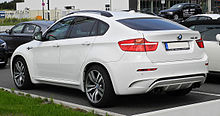
Coupe SUV is a type of sport utility vehicle with a sloping rear roofline similar to fastbacks or liftbacks. The sloping roofline is adopted to offer styling advantage compared to its standard SUV counterpart,[1][2] which helps increase profit margins as manufacturers are able to raise the price by marketing it as a more premium model.[3] Since every coupe SUVs ever produced are of the crossover SUV variety, coupe SUVs may also be called "coupe crossover" or "coupe crossover SUV".
Although coupe itself supposed to mean a passenger car with a sloping or truncated rear roofline and two or three doors, every coupe SUV (except for the Range Rover Evoque Coupé) is equipped with five doors.[4] The body style notably gained criticism as some see it as less attractive and less practical than normal crossovers, since the low roofline reduces into the cargo space and rear passenger headroom.[5] The BMW X6 has been credited as the first coupe SUV.
History[]
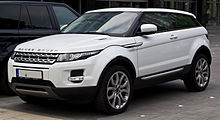
The BMW X6 has generally been considered as the first coupe SUV.[6] It was based on the BMW X5 and has been marketed as a "Sports Activity Coupé" (SAC), as opposed to standard BMW crossovers which are called "Sports Activity Vehicle" (SAV). Introduced in 2008, the vehicle's styling generated some controversy at its introduction and it had less cargo space and a higher price tag. However, the second-generation Lexus RX and the Infiniti FX from 2003 had introduced a similar sloping roof design element without marketing it as a coupe SUV or crossover.[7]
The AMC Eagle SX/4 which was introduced in 1981 had also been argued as the first coupe SUV, as it is a lifted two-door liftback with a permanent all-wheel drive system and was marketed as a car that is capable of light-duty off-road.[8]
Due to its roots from the BMW X6, the segment in its early days mostly consisted of vehicles in the luxury segments.[6] Audi released the coupe version of their crossover with the "Sportback" moniker, while Mercedes-Benz uses the "Coupé" designation, both in line with their two-door and four-door coupes or fastbacks.[9] Several manufacturers began offering coupe crossovers from non-luxury segments, for example the Renault Arkana,[10] and some China-only models such as the Mazda CX-4,[11] Volkswagen Tiguan X and Škoda Kodiaq GT. Some crossovers may feature a similar roof styling, but not explicitly marketed as a coupe SUV. Examples are the Tesla Model X and Model Y, Toyota C-HR, Nissan Ariya, Volvo C40, along with many others.
Consumers[]
According to Strategic Vision, an automotive research and consulting company, buyers of coupe SUVs particularly those from Mercedes-Benz, are four to five years younger than the usual buyer of typical SUVs. It brings down a car brand's average age, which in turn increases the brand's desirability. They also noted that buyers of SUV coupes are less price-sensitive, which means brands can increase the price tag on these vehicles and that would not affect the sales.[3] For example, the BMW X6 is more expensive by around US$5,000 in the U.S compared to the BMW X5, which greatly helped increase revenue for BMW despite being the lesser popular model.[12]
Criticism[]
Coupe SUVs has attracted criticisms since it offers poorer performance than their coupe or sedan counterparts due to additional weight and ride height, while having have less storage capacity and being more expensive than a traditional SUV due to its lower rear roof section.[5] Kristen Lee from Jalopnik argued that coupe SUVs "aren’t are particularly good at any one thing,"[13] Other criticisms rises from the fact that coupes should only have two doors.[14][15]
At its introduction, the exterior design of the BMW X6 has been widely regarded as controversial.[16] The rear design in particular was said to had made the car look "heavy".[17]
Gallery[]
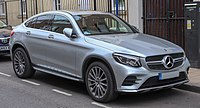
2018 Mercedes-Benz GLC Coupé (C253)

Rear view

2021 Volkswagen Tiguan X

Rear view

2021 Renault Arkana

Rear view
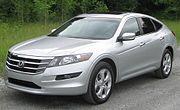
2010 Honda Accord Crosstour
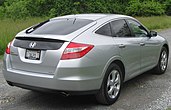
Rear view
See also[]
| Wikimedia Commons has media related to Coupe SUVs. |
References[]
- ^ "Coupe de grace: How the SUV coupe offers the best of both worlds". CNA Luxury. Retrieved 2021-01-17.
- ^ Golson, Daniel (2018-11-13). "The Crossover Coupe Explained—and Every One You Can Buy Today". Car and Driver. Retrieved 2021-01-17.
- ^ a b "Expert Explains Why People Are Buying SUV Coupes". Motor1.com. Retrieved 2021-01-17.
- ^ www.ETAuto.com. "Half sports car, half off-roader: The era of the SUV Coupe has begun - ET Auto". ETAuto.com. Retrieved 2021-01-17.
- ^ a b Noordeloos, Marc (2019-04-03). "The SUV "Coupe" Is Ridiculous and Needs to Go Away". Automobile. Archived from the original on 2019-10-16. Retrieved 2021-01-18.
- ^ a b "Auto Plus TV: why such a wave of coupe SUVs?". Byri. 2021-06-18. Retrieved 2022-02-02.
- ^ "The rise, fall and rise of the crossover coupe". Retrieved 2021-01-17.
- ^ "Opinion: It was the Americans who inspired the SUV coupe trend". WhichCar. Retrieved 2022-02-02.
- ^ "Super comparison test: Mercedes-Benz GLE Coupe vs Audi Q8, BMW X6". MercedesBlog. 2019-03-29. Retrieved 2021-04-10.
- ^ "Arkana matata: Renault's made a BMW X4 rival". Top Gear. 2020-09-23. Retrieved 2021-04-10.
- ^ FineAuto (2019-12-21). "Updated coupe-crossover Mazda CX-4 became the best-selling brand". FineAuto. Retrieved 2021-01-17.
- ^ Homer, Desiree (2020-06-24). "How Does BMW Make Money Off of the Less Popular X6 Coupe?". MotorBiscuit. Retrieved 2022-02-03.
- ^ "Those Goofy 'Coupe' SUVs? People Are Buying The Hell Out Of Them". Jalopnik. Retrieved 2022-02-02.
- ^ "The rise and rise of the SUV-Coupé". Autocar. Retrieved 2022-02-02.
- ^ "Coupes, crossovers, and other car body styles, explained". Popular Science. 2021-07-14. Retrieved 2022-02-02.
- ^ "NEW YORK AUTO SHOW: Which Design Is More Polarizing? Acura ZDX Or BMW X6? - AutoSpies Auto News". www.autospies.com. Retrieved 2022-02-02.
- ^ "2009 BMW X6 xDrive35i Review". Drive. 2009-01-01. Retrieved 2022-02-02.
- Crossover sport utility vehicles
- Car body styles







